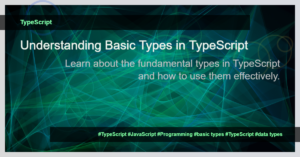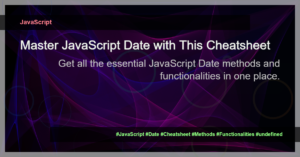Problem Statement:
Imagine you have two different algorithms to solve a problem in JavaScript. How would you determine which one is more efficient? This is where Big O notation comes into play. Big O notation is used to describe the performance of an algorithm and analyze its efficiency.
Use Cases:
Optimizing Code:
By understanding Big O notation, you can optimize your code to make it more efficient. You can identify and eliminate any bottlenecks in your code that may be causing performance issues.Choosing the Right Algorithm:
Big O notation helps you choose the most efficient algorithm for a particular task. It allows you to compare different algorithms and select the one that performs better.Scaling Applications:
When working on large-scale applications, it becomes crucial to ensure your code can handle a high volume of data efficiently. Big O notation helps you analyze the scalability of your code and make necessary adjustments.
Understanding Big O Notation:
Big O notation provides a standardized way to express the time complexity and space complexity of an algorithm. Time complexity refers to the amount of time it takes for an algorithm to run, while space complexity refers to the amount of memory an algorithm uses.
Here are some commonly used Big O notations:
- O(1) – Constant Time:
An algorithm with constant time complexity executes in the same amount of time regardless of the size of the input. Examples of O(1) operations include accessing an element from an array by index or inserting an element at the beginning of an array.
const array = [1, 2, 3, 4, 5];
const firstElement = array[0]; // O(1)
- O(n) – Linear Time:
An algorithm with linear time complexity has a running time directly proportional to the size of the input. Examples of O(n) operations include iterating through an array or searching for an element in an unsorted array.
const array = [1, 2, 3, 4, 5];
for (let i = 0; i < array.length; i++) {
console.log(array[i]); // O(n)
}
- O(n^2) – Quadratic Time:
An algorithm with quadratic time complexity has a running time proportional to the square of the input size. Examples of O(n^2) operations include nested loops where each loop iterates over the input.
const array = [1, 2, 3, 4, 5];
for (let i = 0; i < array.length; i++) {
for (let j = 0; j < array.length; j++) {
console.log(array[i] + array[j]); // O(n^2)
}
}
- O(log n) – Logarithmic Time:
An algorithm with logarithmic time complexity’s running time increases logarithmically with the size of the input. Examples of O(log n) operations include dividing a sorted array in half repeatedly.
function binarySearch(array, target) {
let start = 0;
let end = array.length - 1;
while (start <= end) {
let mid = Math.floor((start + end) / 2);
if (array[mid] === target) {
return mid;
} else if (array[mid] < target) {
start = mid + 1;
} else {
end = mid - 1;
}
}
return -1;
}
const sortedArray = [1, 3, 5, 7, 9];
const index = binarySearch(sortedArray, 5); // O(log n)
Analyzing Algorithms:
To analyze the efficiency of an algorithm, you need to consider the worst-case scenario. In Big O notation, we focus on the term with the highest growth rate as the input size increases.
Some key points to remember:
Constants and Lower Order Terms:
In Big O notation, we ignore constants and lower order terms. For example, O(2n), O(3n), and O(0.5n) are all considered O(n). Similarly, O(n^3 + n^2 + n) is simplified to O(n^3).Best, Average, and Worst Case Scenarios:
Big O notation represents the worst-case scenario. However, algorithms may have different time complexities for best, average, and worst case scenarios. We typically focus on the worst case when analyzing complexities.Comparing Algorithms:
When comparing algorithms using Big O notation, look for significant differences in complexity. O(n) is generally more efficient than O(n^2), and O(log n) is more efficient than O(n).
By understanding Big O notation, you can make informed decisions when it comes to choosing algorithms, optimizing code, and creating efficient applications.







